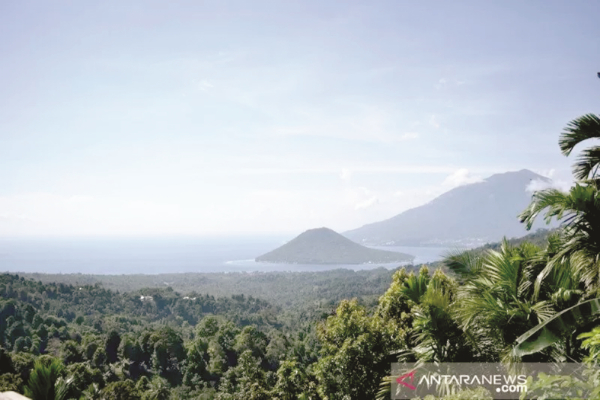Preserving forests to sustain food independence in N Maluku
Published on: Monday, March 08, 2021
By: Antara News
 Changes also occurred with the disappearance of the fish that were usually found around the mangroves near the village on account of the land-clearing.
Changes also occurred with the disappearance of the fish that were usually found around the mangroves near the village on account of the land-clearing.
JAKARTA: Renowned biologist Alfred Russel Wallace has famously written about his delight at discovering an Ornithoptera croesus, or Wallace’s Golden Birdwing, a butterfly native to North Maluku, during a visit to Bacan Island.During his four-year expedition in North Maluku, that began in 1858, Wallace also crossed paths with a Semioptra walacii, or the Angel Bird, that is again endemic to North Maluku.
ADVERTISEMENT
It seems, however, that the habitats of the birdwings and the Halmahera angel birds in the Halmahera Islands are no longer the same as when the British naturalist first explored the land of Moloku Kie Raha. With the passage of time, an increase in human needs has led to the expansion of forest clearing for agriculture, plantations, and mining.
Issues surrounding forest land conversion became apparent when the team reached the village of Inner Gane, the capital of Southern West Gane sub-district.
The mangrove-surrounded village has become a silent witness to the shifts that have come with large-scale forest conversion.
The forest of Inner Gane used to be home to several varieties of trees, but the towering trees are now nowhere to be seen. Rows of palm trees have been planted in their place instead.
ADVERTISEMENT
The arrival of palm oil investment has had some environmental impact around the area, according to one of the residents of Inner Gane village, Muhammad Konoras, who works as a farmer and sells copra for a living.
The 50-year-old man said that after the palm trees were first introduced in the area around seven years ago, pests began to attack the residents’ coconut trees.
ADVERTISEMENT
The farmers saw harvest-less years since 2013, and were only able to reap a harvest last year, he said.
Changes have also occurred with the disappearance of the fish that were usually found around the mangroves near the village on account of the land-clearing.
Konoras said he suspected that this was due to the pesticides and mud from the plantations reaching the shoreline, carried over when rain fell.
Inner Gane’s story has served as a lesson for the area near Outer Gane village, which has been refusing setting up of palm oil plantations.Stay up-to-date by following Daily Express’s Telegram channel.
Daily Express Malaysia










